In August Camilla took an extra day off to go with the August bank holiday and we spent four days driving around Wales.
We didn't get away till noon on the Friday, so we ended up stopping for lunch after less than an hour, in a pub at Longcot.
Our next stop was at the St Fagans National History Museum. This is an "open air" museum, where examples of vernacular buildings from the Welsh countryside have been relocated, and furnished appropriately to the region and a period. These include some things I'd never seen before - like a custom cock-fighting enclosure - but even ordinary buildings were intriguing. One of our favourites was a row of four iron-workers' terraces, done up and furnished as they might have been in different eras, from the early 19th century through to the 1980s). We could easily have spent a day here, but unfortunately only had one hour before it closed. (It was also raining fairly steadily during our visit, which was a bit of a damper.)
We spent the night at Llanelli, where we went for a short walk in the millennium coastal park and then had a rather dire - and not even cheap - Welsh-Chinese meal for dinner. (Just the sort of "Chinese" meal one gets in small country towns in Australia, though probably for twice the price, even at current exchange rates.)
The Saturday morning was spent walking around the Wildlife and Wetlands Trust centre, which (though we've enjoyed visits to other WWT centres) we stumbled over almost by accident, since it was right near our guesthouse.
We pushed on westwards to Haverfordwest, where we had lunch and did a bit of shopping, and then to St Davids. There we looked at the cathedral and a small exhibition on its history, then drove out to admire the coastal views, first at a narrow inlet to the southwest and then from the cliff-tops at a ruined chapel to the south.
Heading north we stopped at the harbour in Lower Fishguard, but couldn't find anywhere there to get dinner, so we kept going to our hotel in Cardigan. We wandered around the town centre before settling on a little cafe for dinner, but had a disappointing experience with overcooked fish and boiled-to-death vegetables.
On the Sunday our first stop was in Aberystwyth. There's a lovely seafront here, but no one was swimming on the beaches - just two lonely flags, with some lifeguards in a fully enclosed glass viewing box. We had coffee and tea and bought some sandwiches to take away for lunch. The National Library was closed or we'd have seen what they had there.
Continuing north, we stopped at an 18th century charcoal-burning blast furnace where a water wheel, powered by an intake above a little waterfall, had driven the bellows. Not far from there is an Osprey project, where we did a short board walk into the estuary - and one of the ospreys was visible through telescopes on a distant perch.
Soon after that we entered Snowdonia, with the mountains rising as we drove north. Our only stop was at the Sygun silver mine, where Camilla (with a sore knee) did a lakeside walk while I went on the underground tour. This is interesting, but there's not much left of the actual equipment, etc, and so it's not as atmospheric as the coal mine at Blaenavon (which we'd visited on our previous visit to Wales).
From Sygun we drove on narrow scenic roads to Caernarfon, where we got in an hour in the castle looking at the museums and wandering the walls before it closed. We got lost getting to our hotel in Tal-y-bont and ended up going into and out of Bangor several times before finding the right exit.
On our last day we drove to Llanberis, where we visited the National Slate Museum, decided against the Snowdon railway (given it looked like a whiteout at the top) and went on an "Electric Mountain" tour of the Dinorwig pumped storage power station. Most of the tour was taken up by watching videos and getting there in the bus, but we got to see the inlet valves, where counterweights are used to force them shut against the pressure, the turbines, and the tops of the generator assemblies. The rotors on each of the units weigh some 450 tons, but can be spun up to 500 rpm in just ten seconds! (The Dinorwig station has about half the capacity of Australia's Snowy Scheme, but in a single facility.)
Heading home on the A5 route, we made one stop at Rhug, where we bought some food from the organic farm shop and visited the gorgeous little chapel. We had some bad traffic around Shrewsbury and feared the whole trip home (on the Monday evening of a long weekend) would be gridlocked, but the motorway was clear enough I sat on 70 mph all the way to Banbury, were we stopped for dinner - the tapas from Pinto's was probably our best meal of the trip.

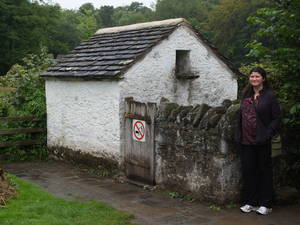
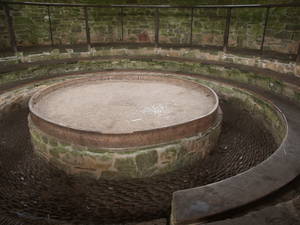
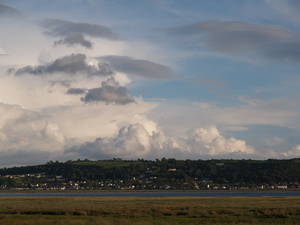
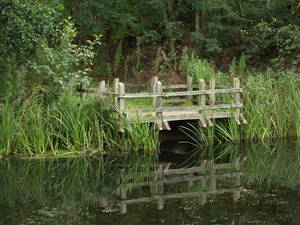
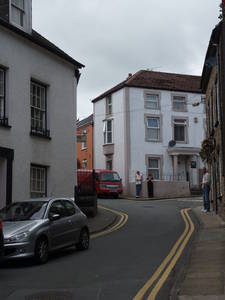
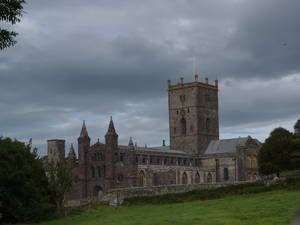
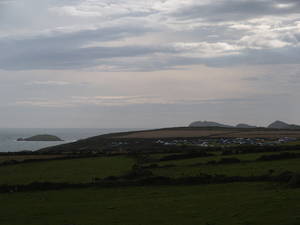
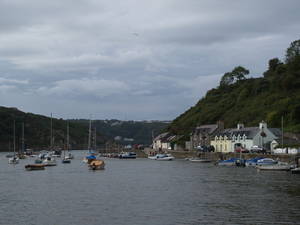
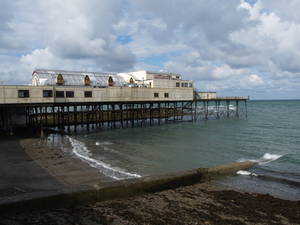
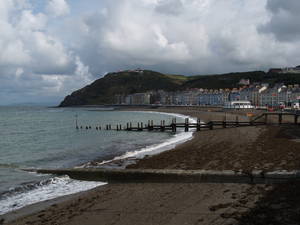
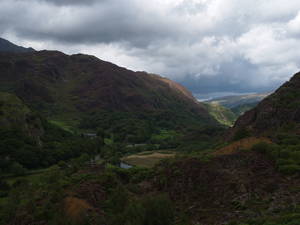
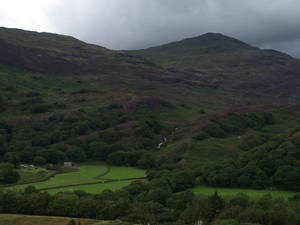
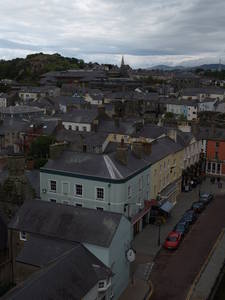
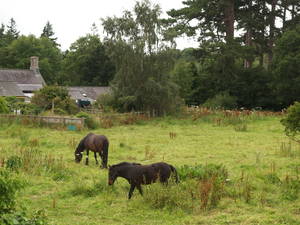
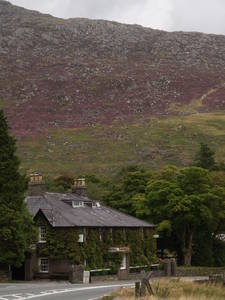
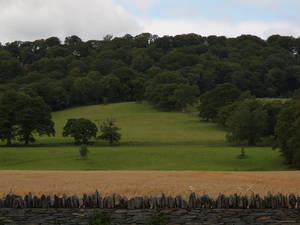
Yes,I do remember reading of your first visit to Wales. Driving to Wales must be like going from Sydney to Newcastle. I like to plot your travels. For that, I have the aid of an Oxford Hammond Concise Atlas of the World. It is a coffee table-sized atlas, which I picked up at Vinnies, in near new condition for just $5.
The trouble is: the atlas is too detailed, even with my reading glasses, I have much difficulty in reading the small prints. It was the same trying to track your African trip. Do you think you can include a link with a simplified map on your future travels?
Though I want to do better than just an armchair traveller, I am more gravitated to Asia in general and China in particular. I read SMH's travel section and yours just to assuage my hunger for other parts of the world.
It sounds and looks a little bit damp - which was the case of our (even shorter) Wales trip too. Still, I rather like all those soft grey horizons!